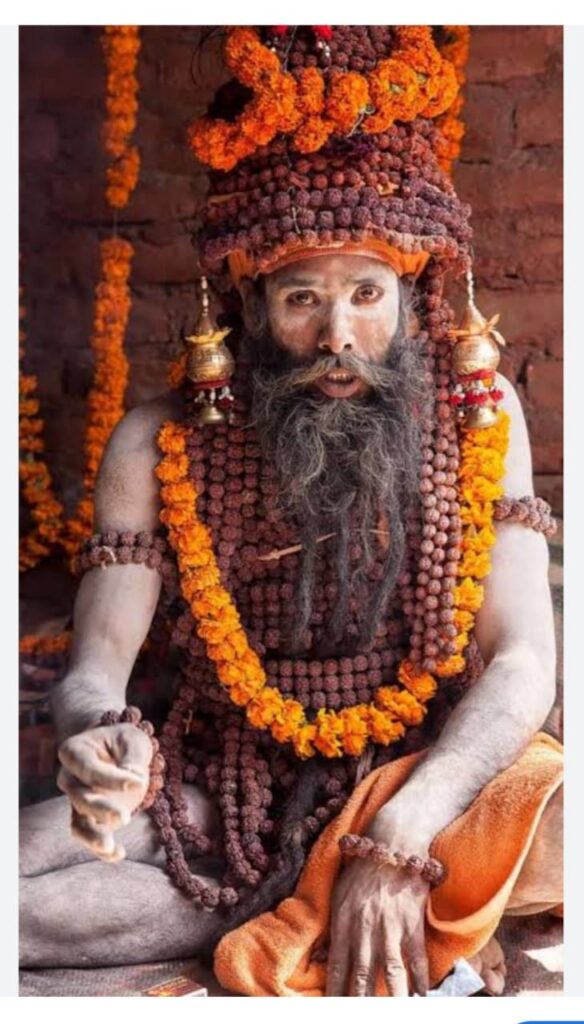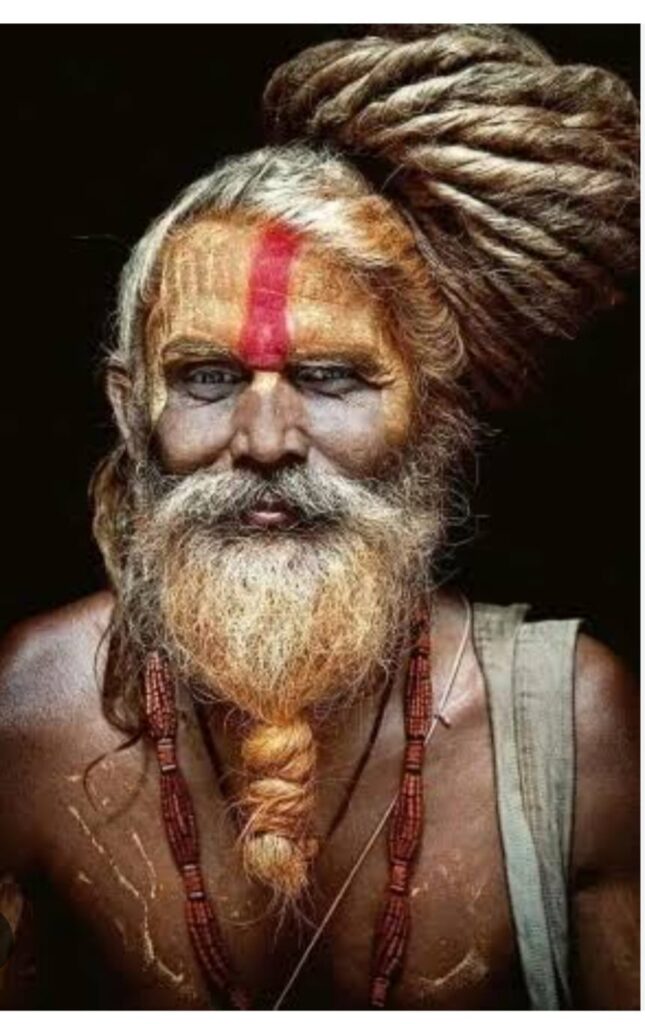A MILLION-DOLLAR question
Where do they come from and where do they go?
Naga Sadhus come from various Akharas, which are monastic orders established for warrior ascetics. These Akharas, such as Juna, Mahanirvani, and Niranjani, are spread across India, mainly in Himalayan caves, forests, and remote ashrams. They gather for the Kumbh Mela, symbolizing their spiritual and militant traditions. The Akhara Parishad manages their activities, hierarchy, and rituals. After the festival, they retreat to their isolated dwellings, continuing meditation and penance. The Akharas follow strict discipline, with a guru-disciple lineage, and play a key role in preserving Hindu spiritual traditions and safeguarding dharma.
Difference between NAGA SADHUS AND AGHORIS
Naga Sadhus and Aghoris are both ascetic Hindu sects but differ in practices and beliefs. Naga Sadhus are militant monks, primarily followers of Lord Shiva, known for their nudity, ash-covered bodies, and participation in Kumbh Mela. They renounce material life, practice celibacy, and engage in spiritual warfare.
Aghoris, also devotees of Shiva, follow extreme tantric rituals, including meditation in cremation grounds, consumption of human remains, and rejection of societal norms. They believe in non-duality, seeing no distinction between pure and impure.
While Naga Sadhus uphold traditional asceticism, Aghoris embrace taboo-breaking practices for spiritual enlightenment.
Beyond Conventions: The Naga Sadhu way of Life

The Nagas hold a unique and sacred position in Indian spiritual, cultural, and mythological traditions. The term “Naga” carries multiple meanings depending on the context. It is primarily associated with serpent deities revered in Hinduism, Buddhism, and Jainism. Additionally, the term refers to the ascetic Naga Sadhus (naked saints) who renounce worldly attachments and dedicate their lives to spiritual pursuits. Their distinct practices, appearances, and esoteric knowledge contribute to their mystique and sometimes inspire fear and reverence among common citizens.
Mythological and Spiritual Significance
In Indian mythology, Nagas are depicted as semi-divine serpent beings residing in the subterranean world called Patala. They are believed to be protectors of treasure and water bodies, symbolizing fertility, rebirth, and the cosmic connection between life and death. Nagas are featured prominently in Hindu scriptures such as the Mahabharata, where Vasuki, the king of Nagas, is pivotal in the churning of the ocean (Samudra Manthan). Another significant Naga figure is Shesha, the cosmic serpent on whom Lord Vishnu reclines.
In Buddhism, Nagas are revered as protectors of the Buddha and his teachings. The story of the Naga Mucalinda shielding Gautama Buddha during meditation is a notable example of their role as guardians of enlightenment.
The Naga Sadhus: Life and Practices
Naga Sadhus are ascetics affiliated with monastic orders of Shaivism, primarily the Dashanami Sampradaya founded by Adi Shankaracharya. They renounce material possessions and often live naked or with minimal clothing as a symbol of detachment from worldly desires. Their rigorous spiritual discipline includes intense meditation, yoga, and tapasya (austerities) to attain self-realization and liberation.
They are most visible during the Kumbh Mela, where they lead processions and perform religious rituals. Despite their austere lifestyle, Naga Sadhus wield significant spiritual and social influence as guardians of dharma (righteousness).
Social Perceptions and Fear
Common citizens often fear Naga Sadhus due to their fierce appearance, unconventional behavior, and association with mystical powers. Their practice of living on cremation grounds and performing tantric rituals adds to their mystique. Furthermore, the Nagas’ readiness to confront societal norms and their perceived supernatural abilities contribute to a sense of awe and trepidation.
Contribution to Indian Society
Despite their intimidating persona, Nagas play a crucial role in preserving ancient spiritual traditions and upholding ethical values. They act as spiritual guides and protectors of Hindu philosophy. Their emphasis on detachment and inner realization inspires individuals seeking spiritual growth. Additionally, their presence in religious gatherings reinforces cultural continuity and the collective sense of identity within the Indian spiritual landscape.
Conclusion
The Nagas, both mythological and ascetic, continue to be an integral part of India’s spiritual tapestry. Their life and practices exemplify the profound quest for spiritual liberation while reminding society of the enduring importance of dharma and devotion. Although often misunderstood, their legacy remains a testament to India’s diverse and rich spiritual heritage.
AGHORIS: The Cremation Ground Saint, their unique path of Enlightenment

Aghoris are an ascetic sect of Hindu sadhus known for their extreme spiritual practices. They follow the teachings of Lord Shiva, particularly his form as Bhairava, seeking liberation (moksha) by transcending societal norms. Aghoris believe in non-duality, meaning they see no distinction between pure and impure, life and death, or good and evil.
Their lifestyle is unconventional—they meditate in cremation grounds, use human skulls as bowls, and perform rituals involving human remains. They consume intoxicants and engage in practices that challenge conventional beliefs about purity. Their purpose is to attain enlightenment by overcoming fear and attachment, realizing the divine in everything.
Society often fears Aghoris due to their intense rituals, association with death, and disregard for social taboos. Many consider them mysterious, dangerous, or even supernatural. However, Aghoris also practice healing, offering remedies for diseases and spiritual afflictions, making them both feared and revered figures in Indian mysticism.







